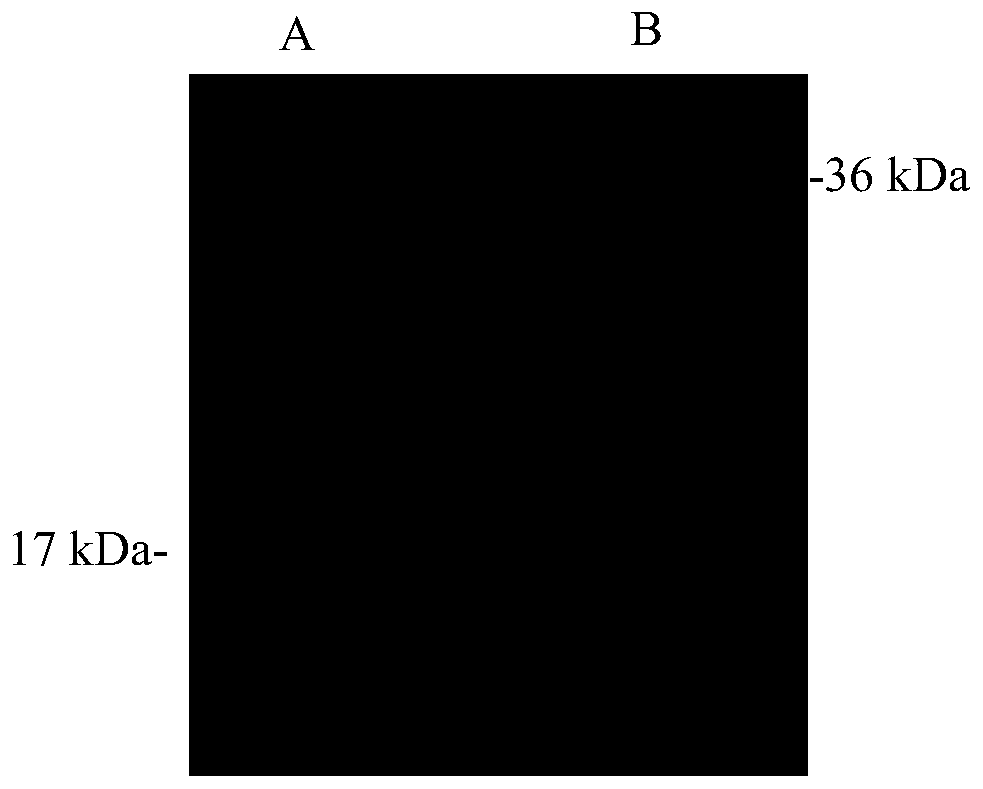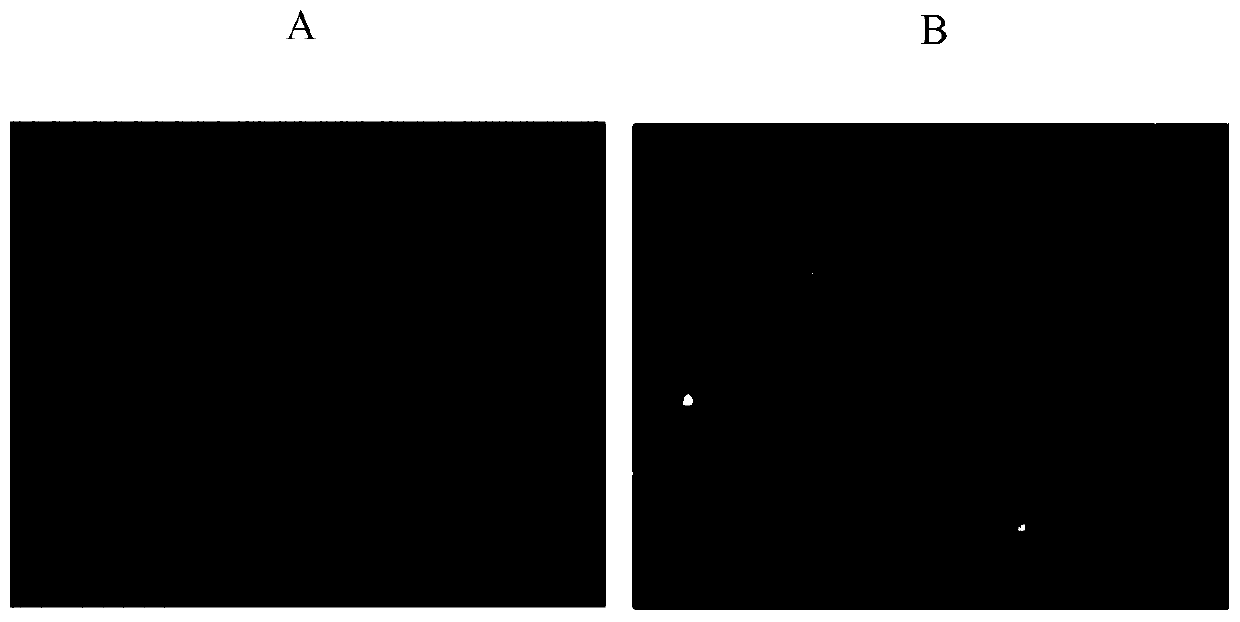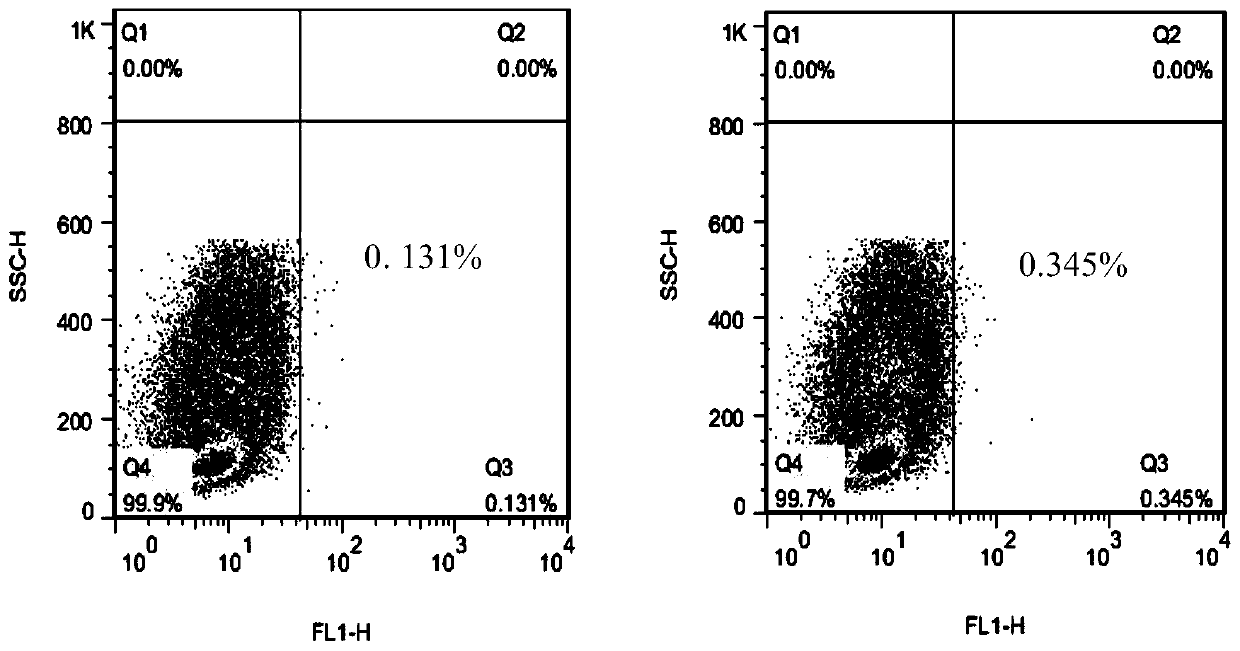Bovine monocyte chemoattractant protein-1 hybridoma cell line, its secreted monoclonal antibody and its application
A technology of hybridoma cell lines and monoclonal antibodies, applied in the direction of anti-cytokine/lymphokine/interferon immunoglobulin, immunoglobulin, anti-animal/human immunoglobulin, etc., can solve the problem of natural bovine MCP-1 Poor effect and other problems, to achieve the effect of strong affinity, good specificity, good sensitivity and specificity
- Summary
- Abstract
- Description
- Claims
- Application Information
AI Technical Summary
Problems solved by technology
Method used
Image
Examples
Embodiment 1
[0119] Embodiment 1: the acquisition of hybridoma cell line
[0120] Obtaining the hybridoma cell line 4G9 with the preservation number CCTCC NO: C2017281.
[0121] 1. Animal immunization
[0122] The specific immunization procedure is as follows: for the first immunization, 100 μg purified bovine MCP-1 protein fully emulsified with Freund’s complete adjuvant was injected subcutaneously at multiple points in the abdomen, and 100 μg purified bovine MCP-1 protein fully emulsified with Freund’s incomplete adjuvant was injected subcutaneously at multiple points 2 weeks later. The protein was immunized for the second time, and after an interval of 2 weeks, 100 μg of purified protein without adjuvant was injected intraperitoneally for the third immunization, blood was collected 7 days later to determine the serum antibody titer, and mice with higher titer were selected for intraperitoneal booster immunization with 100 μg without adjuvant of purified protein.
[0123] 2. Cell Fusio...
Embodiment 2
[0133] Embodiment 2: Preparation of bovine MCP-1 monoclonal antibody
[0134] 1. Ascites Preparation
[0135] The method of inducing ascites in vivo was carried out according to the conventional method. 10-12 weeks old healthy BALB / c mice were intraperitoneally injected with liquid paraffin 0.3-0.5mL / mouse, and 7-10 days later, the hybridoma cells 4G9 diluted in PBS and cultured to logarithmic phase growth were intraperitoneally inoculated, 5×10 5 After seven days, collect the ascites, centrifuge to remove the precipitate, collect the supernatant, measure the antibody titer by indirect ELISA, aliquot, and store at -70°C.
[0136] 2. Antibody Purification
[0137] The prepared MAb 4G9 ascites was purified by Protein A affinity chromatography.
Embodiment 3
[0138] Example 3: Detection of Monoclonal Antibody Characteristics
[0139] 1. Identification of mAb subclasses
[0140] According to the instructions of the monoclonal antibody subclass kit, the antigen-mediated ELISA method was used. Add 100 μL / well of the cell culture supernatant to the coated ELISA plate, wash at 37°C for 1 hour, wash 3 times with PBST for 5 minutes each time; add 1:1000 diluted goat anti-mouse IgA, IgG1, IgG2a, IgG2b, IgG3, IgM subclass antibodies 50 μL / well, 37°C for 0.5 h, add two wells of each subclass to each monoclonal antibody, wash 3 times with PBST for 5 min each time; add 1:5000 diluted rabbit anti-sheep enzyme-labeled secondary antibody 50 μL / well Wells were washed 3 times with PBST at 37°C for 15 minutes; 100 μL / well of TMB chromogenic solution was added, and the color was developed at 37°C for 10-15 minutes in the dark, 2M H 2 SO 4 50 μL / well was used to stop the reaction, and the subclass antibody added to the subclass whose color was sig...
PUM
 Login to View More
Login to View More Abstract
Description
Claims
Application Information
 Login to View More
Login to View More - R&D
- Intellectual Property
- Life Sciences
- Materials
- Tech Scout
- Unparalleled Data Quality
- Higher Quality Content
- 60% Fewer Hallucinations
Browse by: Latest US Patents, China's latest patents, Technical Efficacy Thesaurus, Application Domain, Technology Topic, Popular Technical Reports.
© 2025 PatSnap. All rights reserved.Legal|Privacy policy|Modern Slavery Act Transparency Statement|Sitemap|About US| Contact US: help@patsnap.com



